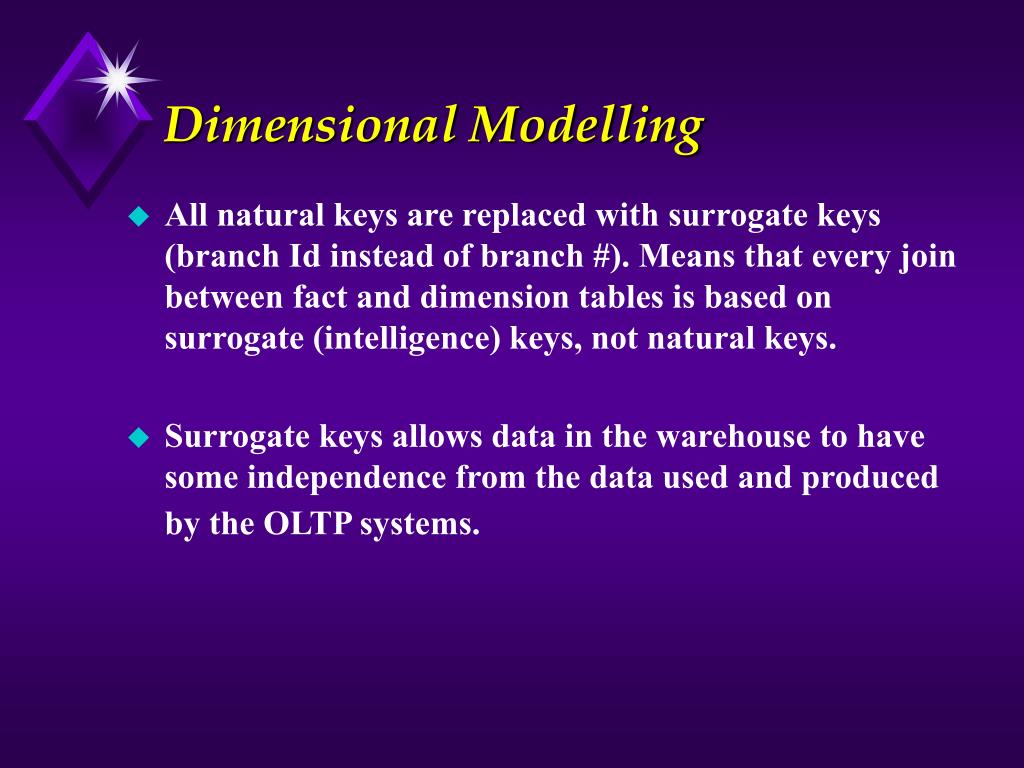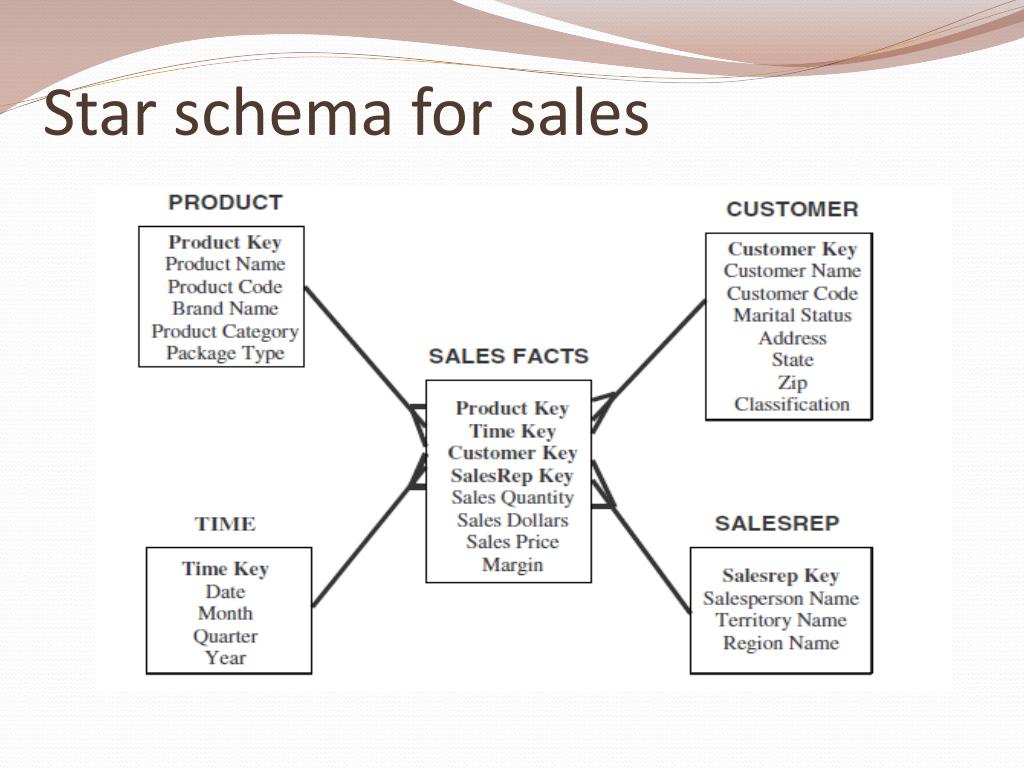
Elements involved in Dimensional Modeling
Dimensional Modeling is a favorite modeling technique in data warehousing. DM is a logical design technique that seeks to present the data in a standard, intuitive framework that allows for high-performance access. It is inherently dimensional, and it adheres to a discipline that uses the relational model with some important restrictions · Following are the rules and principles of Dimensional Modeling: Load atomic data into dimensional structures. Build dimensional models around business processes. Need to ensure that every fact table has an associated date dimension table. Ensure that all facts in a single fact table are at the same grain or level of detail · The dimensional model is an expected, standard outline. The wild variability of the structure of ER models means that each data warehouse needs custom, handwritten and tuned SQL. It also means that each schema, once it is tuned, is very vulnerable to changes in the user's querying habits, because such schemas are asymmetrical. By contrast, in a dimensional Estimated Reading Time: 5 mins

Post navigation
· Steps to Create Dimensional Data Modelling: Step Identifying the business objective – The first step is to identify the business objective. Sales, HR, Marketing, etc. are some examples as per the need of the organization. Since it is the most important step of Data Modelling the selection of business objective also depends on the quality of data available for · Following are the rules and principles of Dimensional Modeling: Load atomic data into dimensional structures. Build dimensional models around business processes. Need to ensure that every fact table has an associated date dimension table. Ensure that all facts in a single fact table are at the same grain or level of detail CHAPTER 10 PRINCIPLES OF DIMENSIONAL MODELING CHAPTER OBJECTIVES Clearly unde rstand how the requirements definition determines data design Introduce dimensional modeling and contrast it with entity-relationship modeling Review the basics of the STAR schema Find out what is inside the fact table and inside the dimension tables

Navigation menu
Dimensional Modeling is a favorite modeling technique in data warehousing. DM is a logical design technique that seeks to present the data in a standard, intuitive framework that allows for high-performance access. It is inherently dimensional, and it adheres to a discipline that uses the relational model with some important restrictions · Following are the rules and principles of Dimensional Modeling: Load atomic data into dimensional structures. Build dimensional models around business processes. Need to ensure that every fact table has an associated date dimension table. Ensure that all facts in a single fact table are at the same grain or level of detail CHAPTER 10 PRINCIPLES OF DIMENSIONAL MODELING CHAPTER OBJECTIVES Clearly unde rstand how the requirements definition determines data design Introduce dimensional modeling and contrast it with entity-relationship modeling Review the basics of the STAR schema Find out what is inside the fact table and inside the dimension tables

Table of Contents
· Steps to Create Dimensional Data Modelling: Step Identifying the business objective – The first step is to identify the business objective. Sales, HR, Marketing, etc. are some examples as per the need of the organization. Since it is the most important step of Data Modelling the selection of business objective also depends on the quality of data available for Dimensional Modeling is a favorite modeling technique in data warehousing. DM is a logical design technique that seeks to present the data in a standard, intuitive framework that allows for high-performance access. It is inherently dimensional, and it adheres to a discipline that uses the relational model with some important restrictions · This chapter contains sections titled: Chapter Objectives From Requirements to Data Design The Star Schema Star Schema Keys Advantages of the Star Schema Star Schema: Examples Chapter S

Benefits of Dimensional Modeling
Slowly Changing Dimension Techniques. Type 0: Retain original; Type 1: Overwrite; Type 2: Add new row; Type 3: Add new attribute; Type 4: Add mini-dimension; Type 5: Add mini-dimension and Type 1 outrigger; Type 6: Add Type 1 attributes to Type 2 dimension; Type 7: Dual Type 1 and Type 2 dimensions; Dimension Hierarchy Techniques. Fixed depth positional hierarchies · Steps to Create Dimensional Data Modelling: Step Identifying the business objective – The first step is to identify the business objective. Sales, HR, Marketing, etc. are some examples as per the need of the organization. Since it is the most important step of Data Modelling the selection of business objective also depends on the quality of data available for · This chapter contains sections titled: Chapter Objectives From Requirements to Data Design The Star Schema Star Schema Keys Advantages of the Star Schema Star Schema: Examples Chapter S
No comments:
Post a Comment